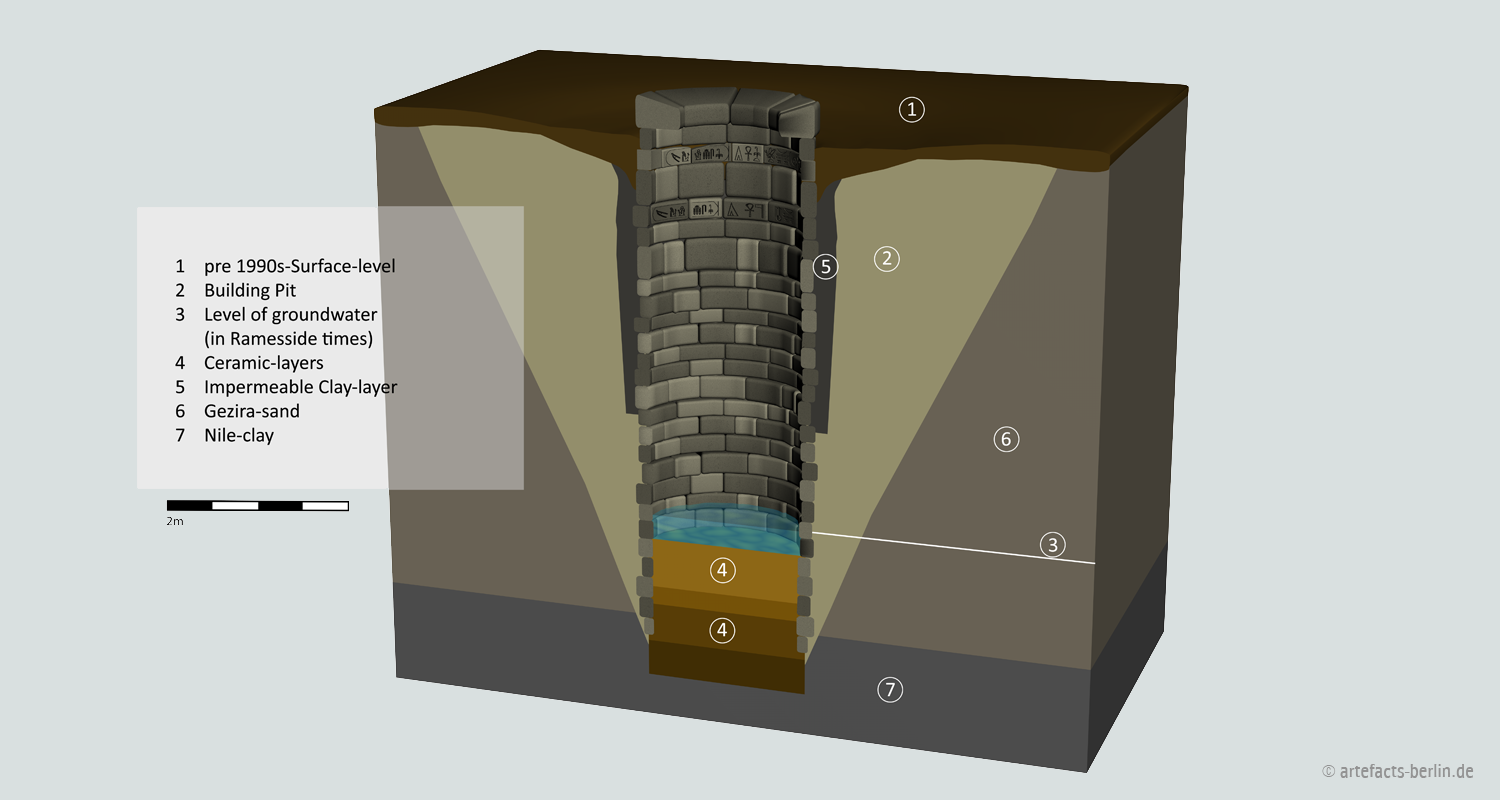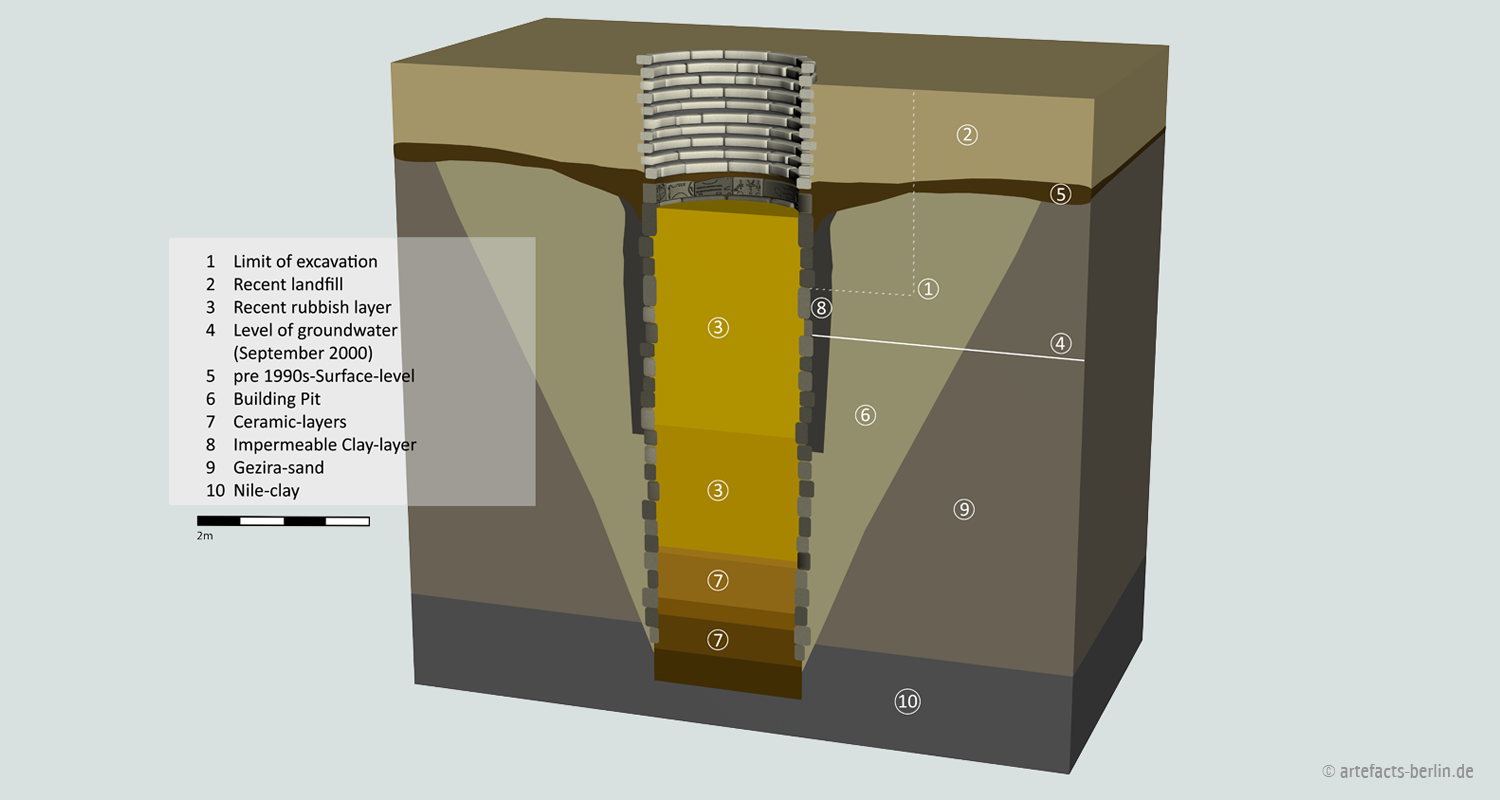About the project
In 2000 and 2001, an ancient Egyptian well was excavated by the Qantir-Piramesse project of the Roemer-Pelizaeus Museum, Hildesheim, Germany, led by Dr. Edgar B. Pusch. The well dates back to the reign of Ramesses II (1279-1213 BCE) and is located in the modern village of Samana in the North Eastern Nile Delta. When constructed, the well was situated in the north-eastern outskirts of the Ramesside Egyptian capital of Pi-Ramesse.
The well is one of the earliest in Egypt to be entirely constructed from stone. Furthermore, it is one of only a few Egyptian wells that have ever been subject to thorough excavation. These excavations revealed several outstanding features, such as two layers of pottery at the bottom of the well that had been filled in intentionally in order to filter the water.
The Samana well was the subject of Henning Franzmeier’s M.A. thesis at the University of Göttingen, Germany, in 2006, and has since been published in various articles and a monograph. Both visualisations have been used to illustrate the construction of the well, its features and the stratigraphy as found by the excavators.
Literature
- Franzmeier, H. 2007: Wells and Cisterns in Pharaonic Egypt: The Development of a Technology as a progress of Adaptation to Environmental Situations and Consumers’ Demands, in: Current Research in Egyptology 2007 (Ed. K. Griffin), 37-52, Oxford.
- Franzmeier, H. 2008: Sherds, Clay and Clean Water, in: Ancient Egypt Vol. 8/No. 6, 45-49.
- Franzmeier, H. 2010: Ein Brunnen in der Ramsesstadt. Untersuchungen zu Typologie und Funktion von Brunnenbauwerken im Ägypten des Neuen Reiches, in: Forschungen in der Ramsesstadt 7, Hildesheim.
- Franzmeier, H. 2013: The Secondary Function of Pottery – a Case Study from Qantir-Piramesse, to be published in: Proceedings of the workshop on Ancient Egyptian Pottery in the McDonald Institute of Archaeology at the University of Cambridge July 2009, Orientalia Analecta Lovaniensia No. 217, Leuven 2013.


